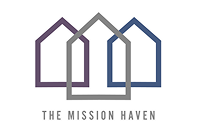5 Shocking Facts About Child Sex Trafficking in the U.S: Why You’d Want to Get Involved
- Elijah Ugoh

- Jul 27, 2021
- 4 min read

The campaign against child sex trafficking is global and requires a network of sophisticated strategies, involving fieldwork, technology, legislation, ongoing prosecution of offenders, supporting survivors, etc., to work. But the least we can all do is stay enlightened on the matter and lend our individual and collective voices to raising more awareness.
Chances are, many people will get involved when they realize the scope of what we are dealing with. Understandably, the conversations we have around the subject are never easy or sweet. Frankly, it makes a lot of people uncomfortable. But, if we are one day going to wake up to a society where children are safe from traffickers — where they can simply live as kids — we must continue to talk about it. That way, we can build insights on current trends, generate support, and address the problem squarely.
Even though we focus on helping child sex trafficking survivors start a new life at Mission Haven, we also take a preventive approach to addressing the issue. Raising public awareness is one way by which we achieve this; It is only when we understand what we’re up against that we can truly proffer lasting solutions to the problem.
1. The U.S is One of The Biggest Consumers of Child Sexual Abuse Materials in the World
Child sexual abuse material (CSAM) is the primary means of distributing child sexual content, which is typically obtained through the sexual exploitation of children. Child sexual abuse material refers to any content that depicts sexually explicit activities involving a child. You may call it child pornography.
The demand for CSAM in the U.S provides a market for continual sexual exploitation of children. The statistics are pretty mind-boggling if you dig deeper, which is one of the reasons why these conversations are rather tough. Unfortunately, many consumers of this type of content are not aware of how the material is obtained in the first place, hence the need to educate people about it.
2. A Child in the U.S is one of the Most at-risk Population of Trafficked Children Globally
Because of the market size and volume of revenue that traffickers generate annually from the crime, the trade continues to grow. According to the 2019 Trafficking in Persons report, children in the United States are one of the heavily trafficked people in the world. When you realize that children are easier to control, cheaper, and less likely to resist, you understand why this is so. Did you know that the top three nations where victims of human trafficking were reported the most in 2018 were the United States, Mexico, and the Philippines? Although authorities, such as the U.S. Department of Health, have no reliable estimate of the number of sexually exploited minors, we know that the numbers run into several thousand each year.
3. Sex Trafficking is the Biggest form of Human Trafficking
Human trafficking mostly takes the form of recruiting people for forced labor or sexual exploitation. Trafficking constitutes the most significant part of this crime. According to a World Population Review statistic in 2019, California had the highest human trafficking rates in the United States, with 1,507 and 1,118 of these cases were sex trafficking cases, 158 were labor trafficking, and 69 were both sex and labor. This means that 74.2% of the cases reported were sex trafficking.
4. Sex Trafficking is Reported in All States
The 2020 trafficking in Persons Report provides deep insights on current trends, especially how vast the struggle is. States like California, Florida, Texas, Ohio, New York, and Nevada rank top of the list, but the truth is that domestic minor sex trafficking (DMST) has been reported in all 50 states, including D.C and Puerto Rico. This is what the Trafficking Victims Protection Act hopes to address. But each states’ individual response will also play a key role in pushing back child sex trafficking in the U.S.
5. Vulnerable Population are Most at Risk
Did you know that the most vulnerable set of children are runaways, homeless, poor, and drug addicts, most of whom are minority groups (blacks and Hispanic)? Notably, the commercial sexual exploitation and prostitution of children thrive in our society because of social and economic minorities. Pimps or traffickers prey on vulnerable children and groom them to enter “the life” of being forced to trade sex for money, shelter, drugs, and others.
How You Can Lend Your Voice to the Cause
It is hard to ignore these hard-hitting stats. While there are many organizations engaged in one or more activities in defending our children, we all can get involved, too. Luckily, there are ways that you can help. The first is following discussions on the problem and staying updated. That way, you can educate your cycle. You, too, can be an advocate.
Next is acting on what you’ve learned; you can report any trafficking case to trafficking hotlines or volunteer your time and resources. At the Mission Haven, this matter is near and dear to our hearts, and we’re committed to helping rescue and rehabilitate as many victims as we can. You can join us today if you wish to give, volunteer, or partner with us.




Comments